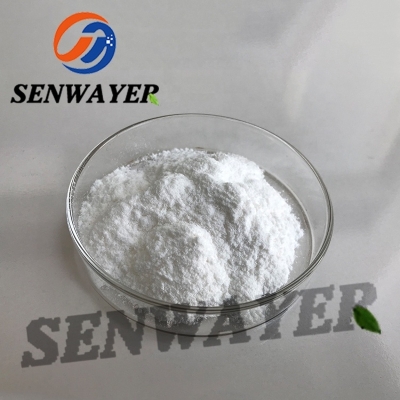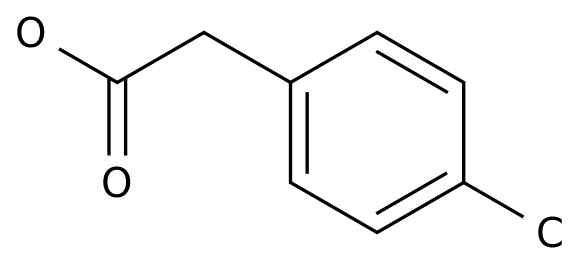Dia site: medical insurance access for orphans, a subsidiary of the health care Commission, plays an important role
-
Last Update: 2018-05-28
-
Source: Internet
-
Author: User
Search more information of high quality chemicals, good prices and reliable suppliers, visit
www.echemi.com
Source: Sina medicine 2018-05-28 "the overall treatment and drug price of rare diseases far exceeds the patient's ability to pay, which is also a burden to the government budget, but if the government does not bear this part of the responsibility, the accessibility of patients' treatment will be difficult to achieve Therefore, in the process of medical decision-making with patients as the core value, the government must participate, and in the process of orphan drug medical insurance access, health technology assessment plays a very important role " Sui binyan, head of the health technology assessment group of the health policy and Technology Assessment Research Office of the health development research center of the national health and Health Commission, said at the 10th dia China Annual Meeting on May 25, 2018 Sui binyan, head of the health technology evaluation group of the health policy and Technology Evaluation Research Office of the health development research center of the national health and Health Commission, introduced that the admission of orphan drugs into the medical insurance needs to be evaluated The admission of orphan drugs into the medical insurance mainly includes two aspects: one is the evaluation of reimbursement, the other is the decision-making of support Funding mainly comes from various funds approved by the insurance and health administration The two core stakeholders of reimbursement assessment are national health technology assessment institutions and Regional Health Administration / decision-making departments The current trend has increasingly encouraged countries around the world to establish their own health technology assessment institutions In fact, the scope of health technology evaluation is mainly value driven pricing, which includes taking clinical demand as the benchmark, curative effect value as the basis, big data as the support, health technology evaluation results as the reference, major innovation as the benchmark, openness and transparency as the principle, and information symmetry as the guide But health technology assessment is the core foundation In Australia, the health technology assessment process belongs to the drug Welfare Planning Committee (PBAC), which belongs to the drug evaluation office under the Ministry of health and directly affects the orphan drug medical insurance catalog Singapore's health technology assessment belongs to the health technology effectiveness Center (ACE) of the Ministry of health HTA reports can be submitted from manufacturers to ace, but ace makes assessment, gives recommendations, does not make review and decision, and finally the Ministry of health decides whether to include them According to Sui binyan, the National Center for health technology assessment, social ethical fairness has become a special part of policy-making guided by evidence-based decision-making In the past, the concept of "every dollar can only be spent once If we can't spend it wisely, we will put our patients at risk" is not suitable for the treatment of patients with rare diseases that can't be afforded Therefore, who proposes health technology assessment to support everyone's access to basic medical and health services Specifically, health technology evaluation is a systematic evaluation of the characteristics, effects and impacts of health technology, and a multi-disciplinary evaluation of clinical, social, economic, organizational and ethical issues of health technology Now it is particularly necessary to consider the scientific and technological innovation value of orphan drugs; the purpose is to provide information for policy-making and allocate limited funds Therefore, it is also required that the information provided by the health technology assessment is reliable and the best at present, on the other hand, it is in line with the situation of local patients Health technology evaluation will evaluate all kinds of health technologies (vaccines, drugs, screening technologies, diagnosis and treatment technologies, treatment plans, etc.) from the perspective of cost and result, and consider the clinical effect of the actual population, comparative cost-effectiveness, affordability, payment ratio (the impact of medical insurance, individual, commercial insurance, budget), ethical and appropriate population and institutions At present, more than 50 governments in Europe, the United States and Asia are adopting health technology assessment, establishing relevant mechanisms at the national level, and clearly proposing that evidence of health technology assessment must be provided when making decisions on health resource allocation and technology management Health technology assessment has been used for decision-making in technology access, pricing, use, reimbursement and obsolescence It was learned at the meeting that China is also building a national health technology assessment center, and the national document will be released soon It is reported that the agency directly belongs to the health and Health Commission, including the review committee and expert committee, and is responsible for organizing theme selection, technical evaluation, review and recommendation, and providing evaluation information for the decision-making departments / agencies of health technology application such as drug administration, science and education, grassroots level, hospitals, disease control, women and children, families, etc The goal is to transform all technologies (including drugs) into policies and provide the best evidence for policy-making At the same time, the National Health Technology Assessment Center will set up sub centers in major areas of the country to meet the needs of various technical assessment Sui binyan said that health technology assessment has played a more and more role in national decision-making, including participating in the formulation of the price of imported emergency drugs, the catalogue of rare diseases and the pricing of orphan drugs in the future On May 22, China's patients with rare diseases were heavily burdened The national health and Health Commission, the Ministry of science and technology, the Ministry of industry and information technology, the State Drug Administration and the State Administration of traditional Chinese medicine jointly issued the first batch of rare diseases catalogue, which reflected the country's emphasis on rare diseases, and also reflected the late start of China's emphasis on rare diseases Rare diseases often refer to more serious chronic diseases, 80% of which are caused by inheritance, and genetic defects are caused by dominant, recessive inheritance or mutation It is reported that in 2016, 6084 rare diseases were found worldwide, involving 3715 genes About 30 kinds of rare diseases are added every year, more than 50% of them are children In mainland China, the rarity ratio is defined as < 1 / 500000 or < 1 / 10000 (newborn), while in Taiwan, it is defined as < 1 / 10000 According to Eurordis research in Europe, a quarter of Ehlers Danlos syndrome has been delayed in diagnosis for nearly 30 years, 40% of the rare diseases investigated have been misdiagnosed, 1 / 6 of the misdiagnosed patients have received surgical treatment wrongly, and 1 / 10 of them have received psychological treatment wrongly However, with the development of precision medicine and genetics, the accuracy of diagnosis of rare diseases has been improved, but the types of rare diseases are growing rapidly, and the demand for treatment is also increasing rapidly At the same time, the inability to afford treatment for rare diseases is widespread The proportion of anti-tumor drugs in orphan drugs is 58% Most of these drugs are expensive, the patients have heavy economic burden, and the clinical demand for orphan drugs is huge Ding Jie, former vice president of Peking University First Hospital, former vice president of Peking University First Hospital, said that the diagnosis and treatment of rare diseases in China started relatively late, and the low recognition rate of the public and professionals on rare diseases is the most serious problem at present, and relevant systems, policies, working systems and models need to be established Patients with rare diseases should be treated with the same quality as patients with other diseases!
This article is an English version of an article which is originally in the Chinese language on echemi.com and is provided for information purposes only.
This website makes no representation or warranty of any kind, either expressed or implied, as to the accuracy, completeness ownership or reliability of
the article or any translations thereof. If you have any concerns or complaints relating to the article, please send an email, providing a detailed
description of the concern or complaint, to
service@echemi.com. A staff member will contact you within 5 working days. Once verified, infringing content
will be removed immediately.







